Finding the right bra size is of utmost importance for teens’ physical health and emotional well-being. It provides them with comfort, proper support for their developing breasts, and boosts their confidence.
Whether it’s for everyday wear or specific activities such as sports, investing time and effort in finding the correct bra size will lead to a healthier and happier teenage experience.
So, let’s take a step towards embracing our bodies and making sure we find the perfect fit!
The Importance of Wearing the Right Bra Size
Wearing the wrong size bra can lead to a host of problems that can impact your confidence and overall health. It’s important to get both the chest and cup sizes right to ensure a proper fit.
If a girl wears a bra that’s the wrong chest size, the bra’s band will either feel tight and uncomfortable around her ribcage, or it will be too loose and ride up her breasts.

1. Comfort and Support
Wearing the right bra size ensures optimal comfort and support. Ill-fitting bras can cause discomfort, pain, and even long-term damage to breast tissue.
A well-fitted bra provides the necessary support, preventing sagging, breast movement, and unnecessary strain on the neck and back. It allows teens to engage in physical activities with confidence and ease.
❤️Suggested reading: Should A Teenager Wear A Bra To Bed?
2. Promotes Healthy Breast Development
During puberty, a teenager’s breasts are still growing and can be quite sensitive. Wearing the wrong size bra can compress breast tissue, leading to pain and affecting the natural shaping of the breasts.
A properly fitted bra supports healthy breast development and protects the fragile breast tissue from any potential damage.
3. Boosts Confidence
Wearing the right-sized bra not only enhances comfort but also boosts confidence. When a bra fits properly, it enhances the natural shape of a teenager’s breasts and makes their clothes fit better.
This positive body image can contribute to improved self-esteem and overall confidence throughout the day.
4. Prevents Posture Problems
For girls with larger breasts, an ill-fitting bra can result in poor posture due to the strain they put on the neck, shoulders, and back. This can lead to discomfort and even chronic pain.
A properly fitted bra provides the necessary support to maintain good posture, reducing the risk of long-term musculoskeletal issues.
5. Ensures the Right Fit for Different Activities
Teens engage in a wide range of physical activities, from sports to everyday movement. Different activities may require different levels of support.
Having a well-fitted sports bra, for example, is essential for providing adequate support during exercise. A professional fitting can ensure that your teen has bras suitable for every occasion.
6. Understanding Sizing and Changes
Getting fitted for a bra helps teens understand how bra sizing works and the importance of regularly checking for size changes. It allows them to learn about their unique body type, fluctuations in weight, hormonal changes, and breast growth.
Regular fittings ensure that a teen always wears the correct bra size and adapts to any changing needs.
❤️ Suggested reading What Is The Average Bra Size For A Teenager?
Remember, every teen’s body is unique, and finding the right bra size involves trial and error. Encourage your teen to seek professional help from a bra fitter who can provide accurate measurements and guidance.
Emphasize that getting fitted for a bra is a normal part of growing up and taking care of their changing bodies.
By addressing their concerns and emphasizing the benefits, you can help your teen understand the importance of being fitted for a bra and encourage confidence and positive body image.
Emily’s story might sound familiar to some of you:
“When I first started wearing bras, I simply picked one I thought looked nice, without much consideration for size.
Over time, I began to notice discomfort and chafing under my boobs. My bras often rode up in the back, making me feel self-conscious and requiring frequent adjustments.
It wasn’t until my mom noticed the red marks on my back and under my bust that we decided to go for a professional fitting. The experience was enlightening. I discovered I had been wearing bras two sizes too small.
With my new bras, I felt a world of difference – no more discomfort, pinching, or constant adjustments. The experience taught me the importance of wearing the correct size.”
Emily W.
Why It’s Important To Have Your Teen Fitted For A Bra?
As teenagers go through puberty, their bodies undergo numerous changes, including breast development. This is a time when proper bra fitting becomes even more important.
Many teens may feel uncomfortable or uncertain about the idea of getting fitted for a bra, but it is a necessary step in ensuring their overall comfort, confidence, and health.
Apart from the reasons stated above about why a proper fit is important, there are also several reasons why having a professional fitting done is important for a teen (or anyone).
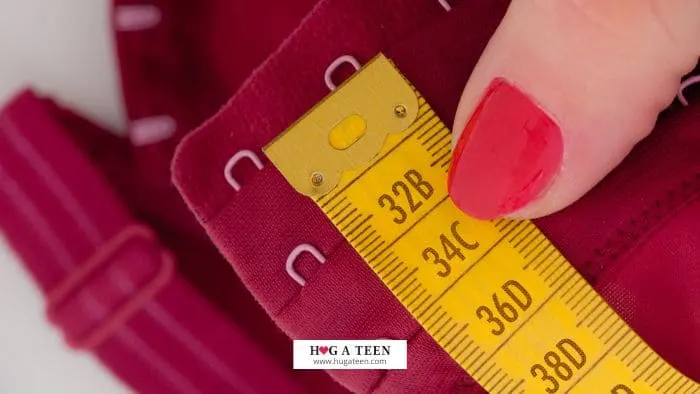
Here are some reasons why it’s crucial to have your teen fitted for a bra:
1. Education
A professional fitting is a great opportunity for a teen to learn about their own bodies and how to select the right wear for their comfort and needs. It allows them to learn about their unique body type, fluctuations in weight, hormonal changes, and breast growth. Understanding one’s body and its changes can lead to better body positivity and self-awareness.
2. Understanding Sizing
Getting fitted for a bra helps teens understand how bra sizing works and the importance of regularly checking for size changes. Regular fittings ensure that a teen always wears the correct bra size and adapts to any changing needs.
Did you know? According a study in 2008, “Most (80%) women wore incorrectly sized bras: 70% wore bras that were too small, 10% wore bras that were too large.”
Chiropractic & Osteopathy
3. Economic Reasons
Bras can be expensive. Buying the wrong size means potentially wasting money on something that won’t be worn. Ensuring a correct fit can save money in the long run.
4. Longevity of the Bra
A well-fitted bra is less likely to be stretched out or damaged due to inappropriate stress on its components. This means it will last longer, offering better value for money.
5. Foundation for Clothing
A bra serves as a foundation garment. When it fits well, clothes often fit and look better, ensuring comfort and a polished appearance.
In essence, while guessing might seem quicker or simpler, taking the time to have a teen properly fitted for a bra ensures physical comfort, supports health and well-being, and is a wise economic choice.
How Often Should You Be Fitted For A Bra?
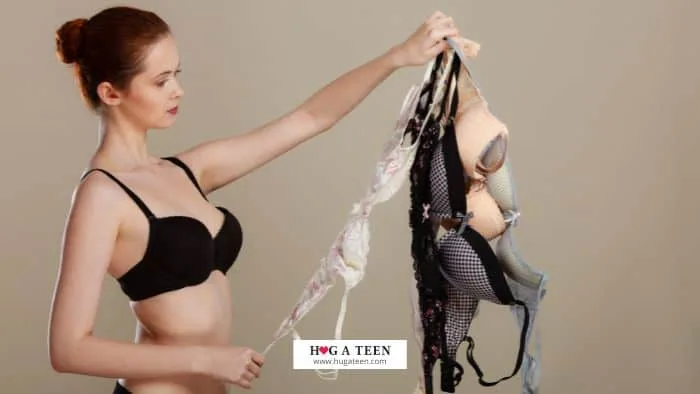
Did you know that your bra size can change over time? That’s why it’s important to be fitted for a bra regularly. So, how often should you be fitted for a bra?
As a general rule of thumb, experts recommend getting fitted for a bra once a year. This frequency allows you to keep up with any changes in your body, such as weight fluctuations or hormonal changes, which can affect your breast size and shape. Regular fittings ensure that you’re wearing a well-fitting bra that provides the right support and comfort.
However, it’s also essential to tune in to your body and listen to its cues. If you experience any discomfort, notice that your bra is no longer fitting correctly, or have significant weight changes, it’s a good idea to schedule a bra fitting sooner rather than later. These signs indicate that it’s time to reassess your bra size and find a better fit.
Teenagers, in particular, may need more frequent fittings due to the ongoing changes in their bodies during puberty. As their breasts continue to develop, their bra size may fluctuate more frequently. It’s essential for young girls to have regular fittings to ensure they’re wearing bras that support their changing bodies adequately.
It’s worth noting that style preferences may also change over time. Some individuals may prefer a tighter fit for sports or look for a bra that is a bit sexier as they get older.
If you’ve recently switched to a new bra style or are experimenting with different brands, it’s a good idea to get fitted to make sure you’re wearing the correct size in those particular styles.
If you don’t have access to a professional bra fitting, there are also resources available to help you measure your bra size at home. You can find online bra size calculators and fitting guides that provide step-by-step instructions on how to measure yourself accurately.
However, it’s important to remember that these tools are not a substitute for a professional fitting and should be used as a general guideline.
Mia’s lesson might help you understand the importance of being fitted for a bra regularly:
“I always assumed that bras were supposed to last a long time, so I wore the same bras for years, even as my body changed.
Over time, my bras stretched out and no longer provided the support they once did.
After complaining of back pain, my doctor asked me about my bras. She suggested that I get a professional fitting.
I learned that not only had my size changed over the years, but bras also have a general lifespan and need to be replaced.
With my new bra, my back pain reduced, and I realized the importance of regular fittings and bra maintenance.”
Mia Z.
Understanding Bra Sizes
When it comes to bras, understanding your size is crucial for both comfort and support. However, bra sizing can be confusing, with different numbers and letters that seem like a secret code. Let’s demystify bra sizes and equip you with the knowledge you need to find the perfect fit.
Bra sizes are typically represented by two measurements: the band size and the cup size. The band size is the measurement around your rib cage, just below your breasts.
The cup size represents the difference between your bust measurement and your band size. For example, if your band size is 34 inches and your bust measurement is 36 inches, you would typically wear a 34B bra.
The band size plays a significant role in providing support and anchoring the bra. It should fit snugly around your rib cage without digging in or riding up.
If the band is too loose, it won’t provide the necessary support, and your breasts may sag. On the other hand, if the band is too tight, it can cause discomfort and leave marks on your skin.
While the band size is essential, the cup size determines how much room your breasts have within the bra. It’s crucial to find the right cup size to ensure your breasts are properly supported and there is no spillage or extra space in the cups.
A bra with a too small cup size can result in the dreaded “double boob” effect, where your breasts spill over the top. Conversely, a bra with a too large cup size can leave gaps and fail to offer proper support.
It’s important to note that bra sizes are not static and can change throughout your life. Factors such as weight fluctuations, hormonal changes, and pregnancy can all impact breast size. This is particularly true for teenagers experiencing breast development during puberty.
Regular fittings are essential for teens to accommodate their changing bodies and ensure they have a well-fitting bra that provides adequate support.
Finding the right bra size is not just about comfort; it also promotes breast health. A properly fitted bra helps distribute the weight of your breasts evenly, relieving strain on your back, shoulders, and neck. This can prevent aches and pains associated with ill-fitting bras or lack of support.
If you’re unsure about your bra size, it’s best to seek professional help. Many department stores and lingerie boutiques offer bra fitting services where trained professionals can measure you and help you find the perfect fit. They can assess your measurements, recommend styles that suit your body type, and provide guidance on finding the right support level for your activities.
Sarah’s story might help you understand why measuring correctly is so important:
“I was always self-conscious about my breasts, thinking they looked uneven and odd in shape. Due to this insecurity, I tended to buy bras that were too big in an attempt to shape or mask the perceived irregularity.
However, this often led to gaping cups and a lack of genuine support. One day, my aunt, who worked in a lingerie shop, offered to fit me professionally. I had never been fitted for a bra before.
To my surprise, my actual bra size was very different from what I’d been buying, and with the correct fit, my breasts appeared more symmetrical and natural.
This fitting not only provided physical comfort but also gave me a significant confidence boost.”
Sarah F.
How To Measure Band Size
Knowing how to measure your band size is the first step in finding the perfect fitting bra. The band size is crucial for providing support and anchoring the bra correctly.
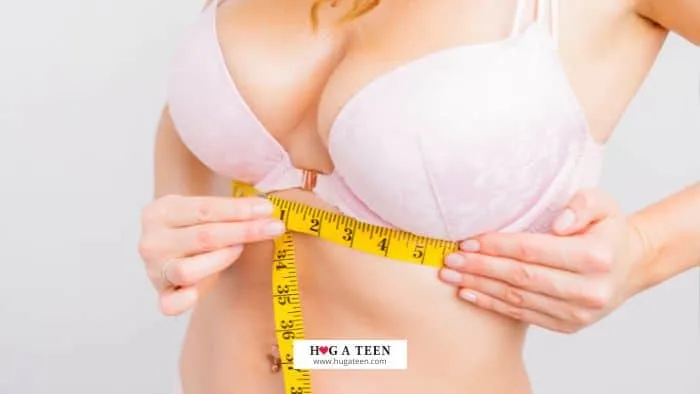
Here’s a simple guide to help you measure your band size accurately:
1. Start by wearing a non-padded bra or no bra at all. This will ensure that your measurements are as accurate as possible.
2. Using a soft tape measure, stand straight with your arms relaxed at your sides. The tape measure should be level and parallel to the floor.
3. Measure around your rib cage, just below your breasts. The tape measure should be snug but not too tight, as you want to ensure comfort. Make sure the tape measure is horizontal and not slanted.
4. Take note of the measurement in inches. This number will determine your band size.
5. If your measurement is an odd number, round it up to the nearest even number. For example, if your measurement is 31 inches, round it up to 32 inches.
6. Keep in mind that different brands may have slight variations in sizing, so it’s always a good idea to try on multiple sizes to find the best fit.
Remember, finding the right band size is crucial for comfort and support. A band that is too tight can cause discomfort and leave marks on your skin, while a band that is too loose won’t provide the necessary support.
Regularly measuring your band size, especially during puberty or weight fluctuations, will ensure you have a well-fitting bra that offers the right level of support.
How To Measure Cup Size
Knowing your cup size is essential for finding the right bra that provides comfort, support, and enhances your natural shape.
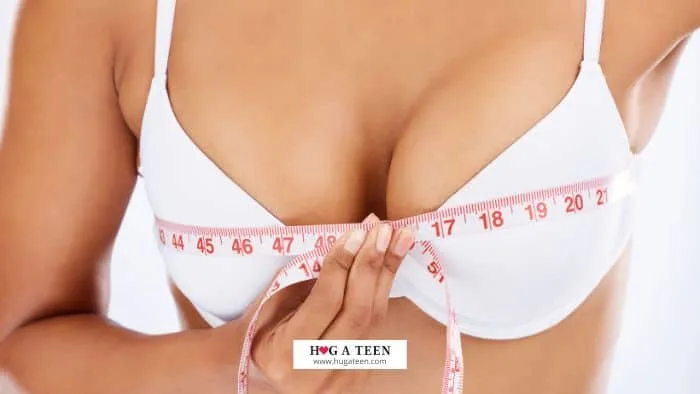
Here’s a step-by-step guide on how to measure your cup size accurately:
1. Start by wearing a non-padded bra or no bra at all. This ensures that your bust measurements are as close to your natural size as possible.
2. Stand straight with your arms relaxed at your sides. Use a soft tape measure to measure around the fullest part of your bust. This is usually where your nipples are located.
3. Make sure the tape measure is level and not too tight or too loose. It should be snug against your skin but not digging in. Remember, comfort is key.
4. Take note of the measurement in inches. Write it down as it will help in determining your cup size.
5. To calculate your cup size, subtract your band size (the measurement below your breasts) from your bust measurement. For example, if your bust measurement is 36 inches and your band size is 32 inches, the difference is 4 inches.
6. Refer to a bra size chart to determine your cup size based on the difference. Each inch corresponds to a cup size, with 1 inch being an A cup, 2 inches a B cup, 3 inches a C cup, and so on.
7. Keep in mind that cup sizes can vary across different bra brands, so it’s always a good idea to try on bras in different sizes to find the perfect fit.
It’s important to remember that cup size is not a standalone measurement and should always be considered along with your band size.
It might be confusing to realize that you might need to go up a band size rather than a cup size if the bra feels too small. For example, you might find a 34B too small. Instead of getting a 34C, you might find that a 36B is actually the right size for you.
Understanding how to measure your cup size correctly empowers you to choose the right bra that flatters your body shape and boosts your confidence.
So go ahead, grab your measuring tape, and discover your perfect cup size.
Factors To Consider When Buying A Teen Bra
When it comes to buying a bra for a teenager, there are several factors to consider. The right bra size is not only important for comfort but also for the proper development and support of growing breasts.
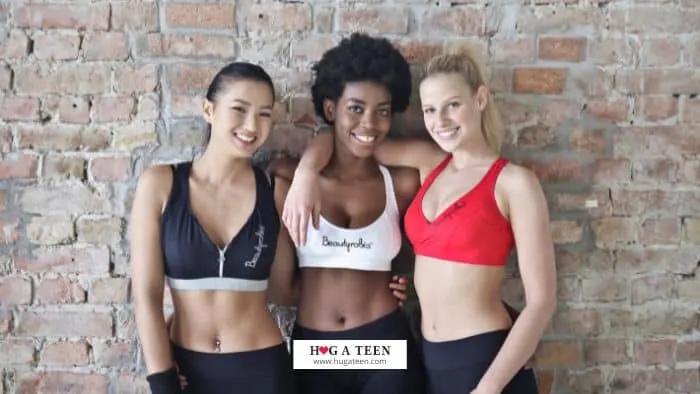
Here are some factors to keep in mind when purchasing a teen bra:
1. Correct Bra Size
The first and foremost factor to consider is the correct bra size. Many teens may be wearing the wrong bra size, which can lead to discomfort and potential damage to breast tissue. It is crucial to measure both the band size (the measurement below the breasts) and the cup size (the measurement around the fullest part of the bust) accurately. This can be done using a soft tape measure and referring to a bra size chart.
2. Breast Development
Teenagers go through various stages of breast development during puberty. It is important to choose a bra that accommodates these changes and provides adequate support. Bras with adjustable straps and multiple hook closures are ideal as they can adapt to the fluctuating size of the breasts.
3. Comfort and Range of Motion
Teenagers are often engaged in physical activities such as sports and exercise. Therefore, a bra that offers comfort and allows for a full range of motion is essential. Sports bras are a popular option as they provide additional support and minimize breast movement during physical activity.
4. Body Type
Every teenager has a unique body type, and it’s important to choose a bra that suits their individual shape. Some may have wider rib cages, while others may have narrower ones. Understanding the body type can help in finding the right fit and preventing discomfort or ill-fitting bras.
5. Style and Design
Teenagers often have preferences when it comes to the style and design of their bras. There is a wide range of bra types available, such as soft-cup bras, underwire bras, strapless bras, and bralettes. It’s important to consider their preferences while also ensuring that the chosen style provides the necessary support and comfort.
6. Expert Assistance
If in doubt, it is always beneficial to seek expert assistance. Many department stores have trained bra fitters who can help teenagers find the perfect fit. These professionals can provide valuable advice and recommendations based on individual needs and measurements.
❤️ Suggested reading Guide To Buying First Bras For Teenagers
Ava’s sports experience is a good example of why having the right bra for different purposes is vitally important:
“I used to love playing soccer when I was younger. As I entered my teenage years and started developing breasts, I noticed that running became uncomfortable due to breast movement.
Instead of seeking a proper sports bra, I decided to wear two regular bras to offer more support. Not only did this solution fail to provide the necessary support, but it also caused excessive sweating and even rashes.
After a game where I felt particularly sore, my coach suggested I get a fitting for a sports bra. I was so happy when I found a sports bra that fit me perfectly, minimizing movement and discomfort.
It really helped me to focus solely on the game without feeling uncomfortable or embarrassed.”
Ava S.
Trouble Shooting Common Fit Issues
While finding the right bra size is essential, it is not always enough to ensure a perfect fit. Many teenagers may experience common fit issues that can lead to discomfort and dissatisfaction. Here are some common fit issues and tips on how to troubleshoot them:
1. Band Riding Up
One common issue is the band of the bra riding up at the back. This can be caused by a band size that is too large or a bra that has lost its elasticity. To troubleshoot this issue, try going down a band size or investing in a new bra with a firmer band. You might also need to loosen the shoulder straps slightly to ensure that the band is parallel to the ground and sits snugly just below the bust.
2. Cup Spillage
Cup spillage occurs when the breasts overflow from the cups, creating the dreaded “double boob” effect. This is usually an indication that the cup size is too small. Consider going up a cup size to ensure that the breasts are fully contained within the cups. Alternatively, try a bra with a different cup shape that better suits your breast shape.
3. Shoulder Strap Digs In
If you find that the shoulder straps dig into your shoulders, it’s a sign that your bra is not providing enough support. This issue may be resolved by adjusting the strap length or opting for a bra with wider straps. Check that the band is offering support around your chest. Additionally, a bra with a U-shaped wire can help distribute the weight of the breasts more evenly, alleviating pressure on the shoulders.
4. Band Too Tight
A bra with a band size that is too tight can cause discomfort and leave red marks on the skin. To address this issue, try going up a band size. It’s also important to ensure that the bra is fastened on the loosest hook closure, as this allows for adjustment as the bra stretches over time. If the band still feels uncomfortable, consider trying a bra with a wider band for added comfort.
5. Gap in the Cup
Sometimes, a bra may fit well in the band but have a gap in the cup area. This can be due to a mismatch between the cup size and breast shape. If you experience this issue, try a bra with a different cup shape or style. Some bras, such as push-up bras or padded bras, can help fill in the gap and create a more flattering and seamless look.
Remember, finding the right bra size is a process of trial and error. It’s important to be patient and try different sizes, styles, and brands to find the perfect fit.
What Type Of Bra Should Teenagers Wear?
When it comes to choosing the right bra for a teenager, comfort, support, and proper fit are the key factors to consider.
Teenagers go through a significant phase of physical development, including breast growth.
Therefore, it’s crucial for them to wear bras that offer the right level of support and accommodate their changing body.
1. Training Bra
Training bras, also called crop top bras or slip-on bras, are great as starter bras. They lack cup sizes or underwire, so they’re much more comfortable. They don’t provide much support, but they help your teen adjust to wearing a bra and can boost her confidence by covering her chest. Training bras can be called crop top bras or slip-on bras.
2. Sports Bra
One of the most suitable types of bras for teenagers is the sports bra. Sports bras are designed to provide adequate support during physical activities such as sports and exercise. They are often made of stretchy and breathable materials that allow for movement without causing discomfort. Sports bras also help reduce breast movement, which can be beneficial for teenage girls who are active and participate in physical activities.
3. Soft-Cup Bras
Soft-cup bras are another excellent option for teenagers. These bras offer a comfortable and natural shape without the use of an underwire. Soft-cup bras are typically made of soft and stretchy materials that adapt to the changing shape of the breasts. They provide gentle support and are ideal for everyday wear.
4. Underwire Bras
For teenagers with larger breasts, underwire bras can provide extra support. Underwire bras have a U-shaped wire sewn into the fabric under the cups, which helps lift and shape the breasts. It’s essential to ensure that the underwire doesn’t dig into the breast tissue or cause any discomfort.
To find the right bra type, teenagers should consider their levels of physical activity, breast size, and personal style preferences. It’s also helpful to consult with bra fitting experts in department stores or specialty lingerie shops. These professionals can assist in finding bras that fit well and cater to individual needs.
In conclusion, teenagers should opt for bras that prioritize comfort, support, and proper fit. Sports bras, soft-cup bras, and underwire bras are suitable options depending on individual preferences and breast size.
Regular bra measurements and consultations with bra fitting experts can ensure teenagers wear the right bra size for their changing bodies.
By choosing the appropriate bra type, teenagers can feel comfortable, confident, and fully supported throughout their day.
References:
Wood, K., Cameron, M., & Fitzgerald, K. (2008). Breast size, bra fit and thoracic pain in young women: A correlational study. Chiropractic & Osteopathy, 16, 1. https://doi.org/10.1186/1746-1340-16-1
